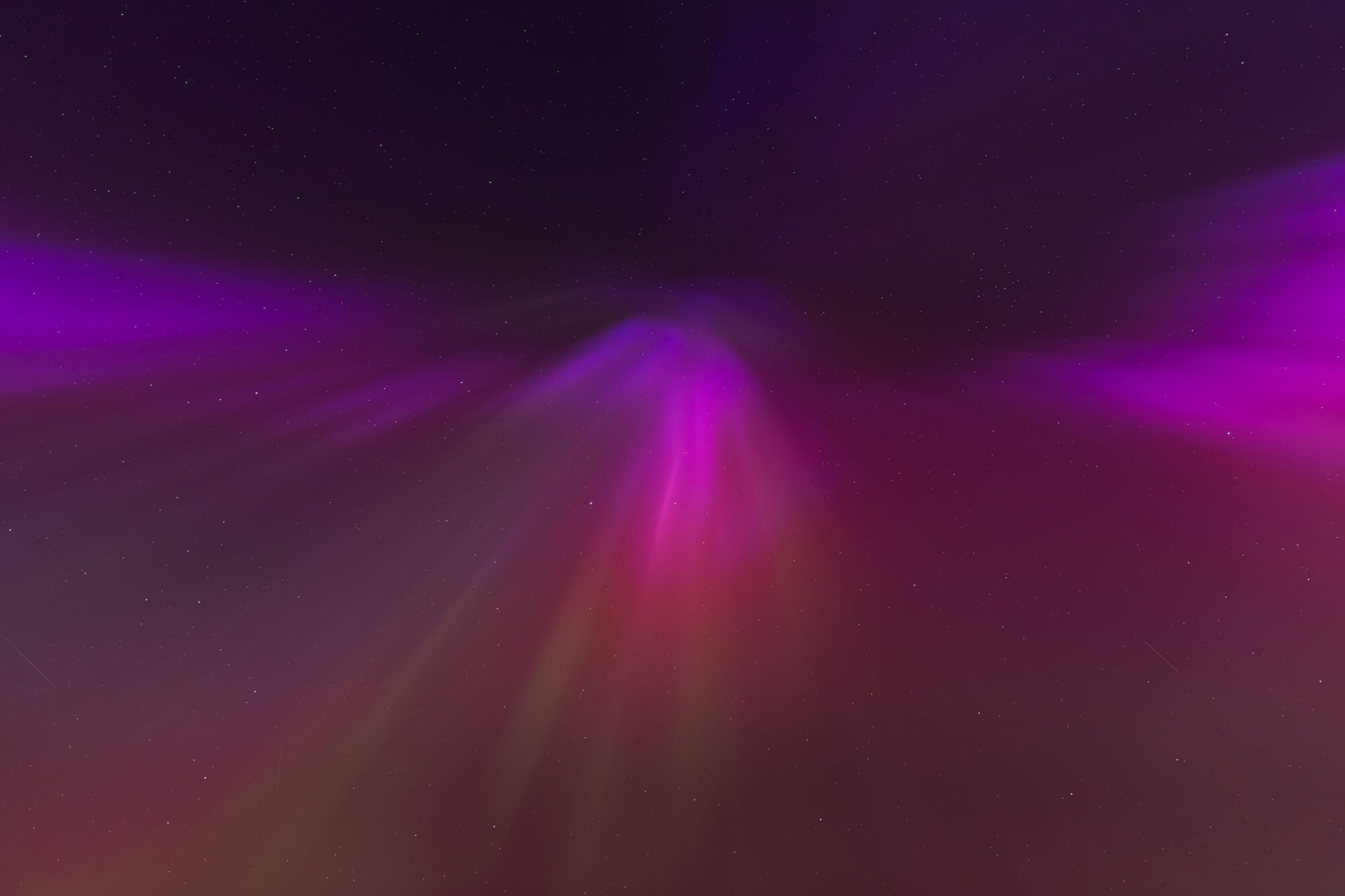Friday the 10th of May, the day I finally completed a bucket list dream! A rare G5 geomagnetic storm meant the Northern Lights were visible for many countries across the Northern Hemisphere. A spectacular display of vibrant colours left millions of people in awe as the Aurora Borealis danced across the night sky. I had dreamed of the day I would have the chance to photograph the Northern Lights and my moment had finally arrived. Here’s my experience from one of the most memorable nights of my life.
Red Alert – Intense Solar Activity Forecast
Early in the morning of 10th May, I noticed a notification on my phone from AuroraWatch UK. The notification contained a warning of a “Red Alert” for significant solar activity later that day. I didn’t think much of the notification at first. In my mind, I knew that the Northern Lights “season” was over and that the warning would most likely expire and nothing would come of it. In the past, I have reacted to several “Red Alerts” only to be disappointed by zero visibility of the Northern Lights, hence my scepticism. Luckily, something in my mind told me to check multiple sources, and that’s exactly what I did. The forecast looked incredibly confident. Several credible sources referenced a G5 geomagnetic storm which would bring intense Northern Lights activity.
The incredibly rare G5 geomagnetic storm was said to occur once every 20 years. The intensity meant that in theory, the Northern Lights would be visible across the whole UK. This was unheard of and too good an opportunity to miss! I jumped out of bed and started getting my camera equipment ready for the big night ahead.
Picking A Location For Photographing The Northern Lights
Having reacted to several “Red Alerts” in the past, I already had a handful of locations in mind. My dream shot was to photograph the breathtaking Northern Lights perfectly reflected across a calm body of water. There could only be one location for this, the beautiful Blea Tarn in the Lake District.
Picturesque Blea Tarn, Lake District National Park
I decided on Blea Tarn for several reasons. Firstly, the iconic view. Looking north across the tarn provides one of the most spectacular views in the Lake District. The instantly recognisable shape of the Langdale Pikes stands proudly in the distance. The light pollution is also near zero, and the view towards Langdale Valley is free from unnatural lighting. I knew that I could use a careful selection of rocks along the shoreline of Blea Tarn as foreground interest. The tarn, reflections, and the iconic Langdale Pikes would do the rest of the work.
My plan was sorted and it was now a waiting game.
Showtime, Photographing The Northern Lights
After an impatient day of waiting around, the time finally came. I jumped in my car and arrived at Blea Tarn around 10 PM, parking in the convenient National Trust car park across the road. There wasn’t much point in getting there earlier as it wouldn’t have been completely dark. However, I’m glad I didn’t arrive any later as the car park was busier than expected. Unsurprisingly, several other photographers had the same idea as myself.
Gathering my equipment, I headed towards the tarn and started scouting for a composition. Nothing too complicated. All I needed to do was find a nice assortment of complimentary rocks in the foreground, the rest of the frame would take care of itself. After settling on a composition (one I’d photographed in the past), I set up my camera, selected my wide-angle lens and fired a couple of test shots. This was mostly to check the frame for anything unnecessary and to set my focus before the remaining light disappeared. It’s not too difficult to set your focus during the night, (you can use a light source such as a star or the moon to set focus to infinity) but it is infinitely easier with light. Again came another period of impatient waiting around.
A Dream Come True
Suddenly, a yell broke the silence of the perfectly calm evening, “The Northern Lights!” All you could hear was a chorus of “where” as photographers along the bank began scanning the sky for any signs of activity. It was a surreal moment, for the first time in my life, I was about to witness the Northern Lights with my own eyes. Unexpectedly, the Northern Lights didn’t appear to the north. This caught me off-guard. I’d considered everything other than this.
That said, as soon as the activity began, a group of wild campers on the far left side of the tarn had decided to light a campfire. I won’t go too far into how angry this made me feel. Not because they were in my composition. Blea Tarn is an incredibly delicate ecosystem. Campfires and sources of ignition are strictly prohibited to preserve and protect the precious ecosystem. Lighting a fire in an area such as Blea Tarn is one of the most selfish things you can do. Despite being told by several photographers to extinguish the fire, the guys camping laughed and carried on as they were.
Don’t be these guys!
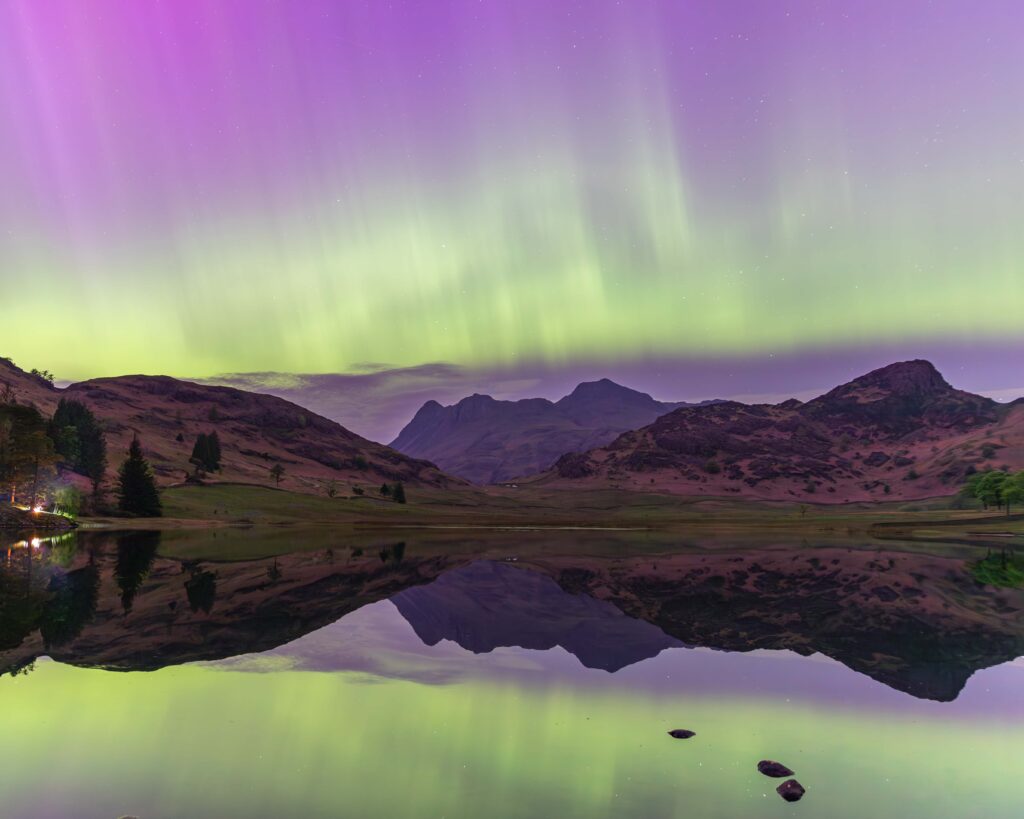
N.B. The above photo was taken towards the end of the night at a much higher ISO. This wasn’t my original composition, I took this purely to show the wild campers with their campfire on the left side of the tarn.
Reacting To Dynamic Conditions
Digression aside, I now had to react to the changing conditions around me. The Northern Lights were becoming increasingly visible to the naked eye. It wasn’t long until the intense and vibrant show was directly above our heads. There was only one thing for it, salvage the night and point my camera straight up at the activity above. This turned out to be a great decision. No, it wasn’t the initial epic composition I had in mind. But, I managed to photograph some of the most incredible moments I had ever witnessed. It was an awe-inspiring moment and the excitement only built from there on. As the night progressed, I lost track of the number of times I shouted “Oh wow” and “Look at that!”. Here are a few favourites from the night. Far from my best photography, from a compositional point of view. However, one of the most memorable experiences of my life, by far!
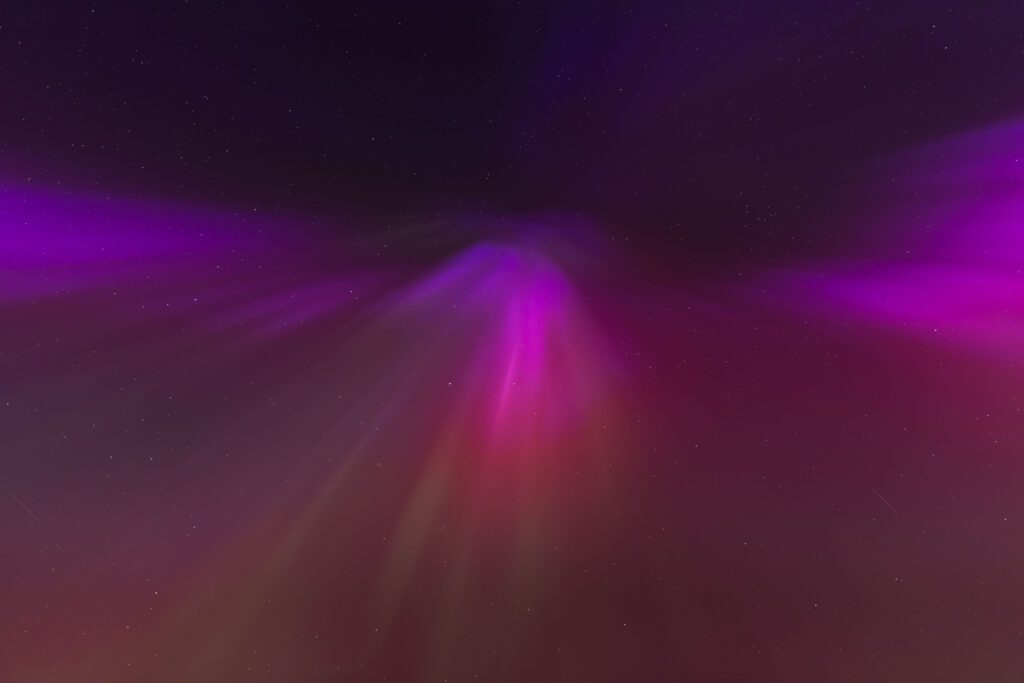
I hope that the sheer level of detail in the sky comes across on the platform you are using to view this blog post. This photograph was taken towards the peak of the Northern Lights activity. Never in a million years did I think I would see and experience anything like this. It was nothing short of mind-blowing. Higher resolutions of each of these photographs are included in my quarterly newsletter. Details of this will be available soon.
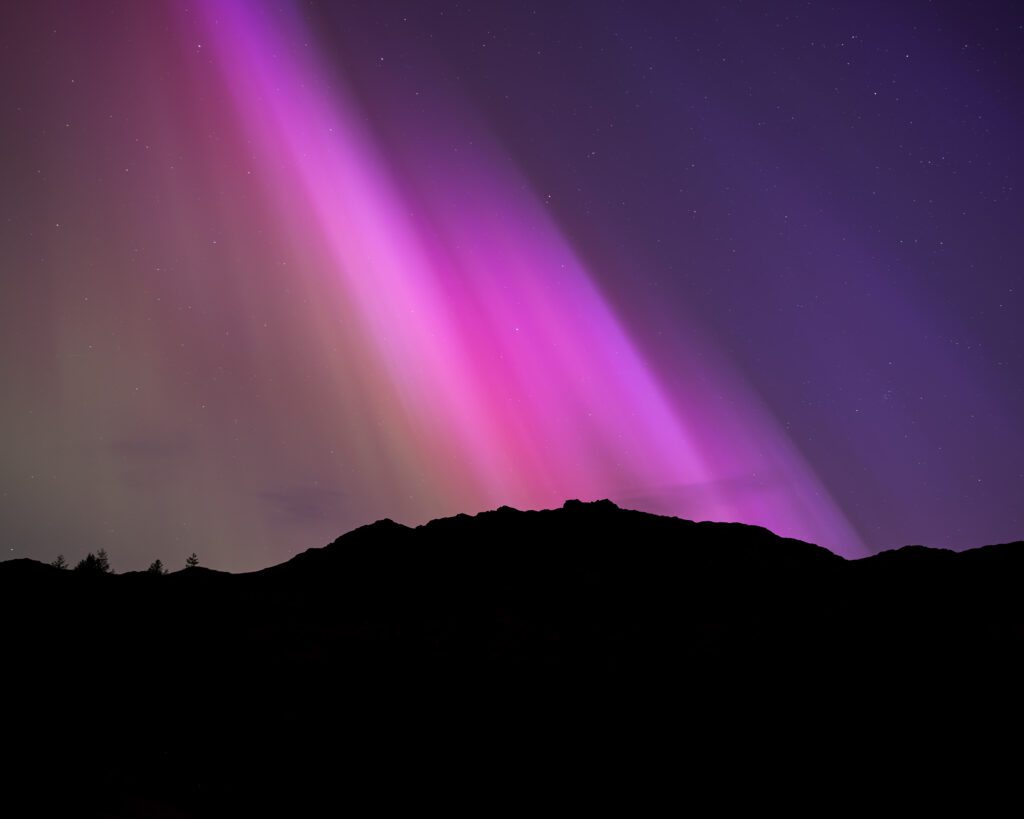
Throughout the whole night, my head was on a swivel. Admittedly, I took a lot more photographs than I needed to. I was so absorbed in the moment, I had finally seen the Northern Lights. I managed to capture several reactive photographs using surrounding silhouetted mountains as additional points of interest, which I think worked well considering. One thing is for sure, there were a lot of incredibly happy people that night! Who needs to go to Iceland, eh!
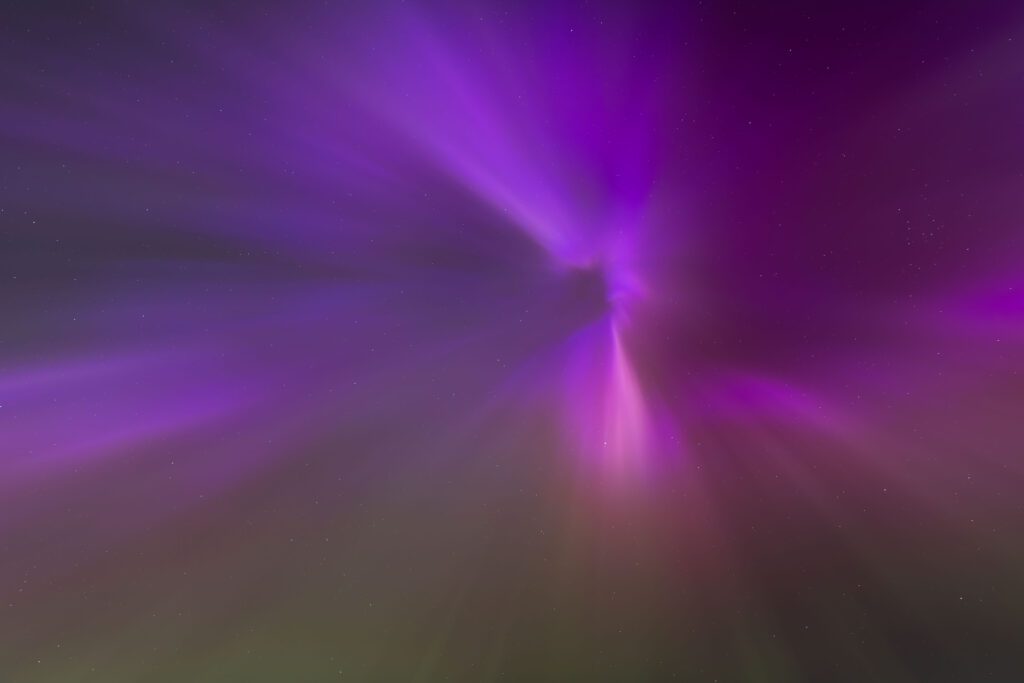
Lessons Learned From Photographing The Northern Lights
First and foremost, location. I never thought I would say this, but I believe I was too far north! I spent most of the night looking upwards, where most of the Northern Lights activity occurred. This rendered my compositions useless. I always had a backup location in mind which was Black Crag. Black Crag is a small mountain not too far from Blea Tarn and knowing what I know now, would have provided a significantly improved viewpoint of the Northern Lights. Should I have the incredible opportunity to photograph the Northern Lights again, I will without doubt be heading to a higher viewing point.
On this occasion, the rare G5 solar storm lasted well into the night. Instead of putting all my eggs in one basket and staying in one location, I should have moved around. This would have improved the variation in my photographs and allowed me to develop further my experience of knowing which locations work best.
Finally, no matter how wide your lens is, you will always want a wider-angle lens! I travelled light and only took a mid-range telephoto covering 24-70mm. In hindsight, 24mm wasn’t wide enough to capture the dramatic action that the storm provided. Realistically, I think anywhere between 10-20mm would be perfect for capturing wide-angle views of dramatic Northern Lights activity. It all comes down to weight and availability, really. It’s equally important to have a faster lens. This means you will want an aperture of F2.8 or wider.
A Summer Of Photography, Exciting Times Ahead
Macro Photography With A Twist
Over the next couple of months, I’m looking forward to some varied photography. I plan to build upon some of my work from last summer, photographing the various butterflies, damselflies and dragonflies around my local area. This will coincide with a few fantastic initiatives to encourage more people to embrace wildlife and the Great Outdoors. The Wildlife Trust’s exciting “30 Days Wild” campaign throughout June, and the Butterfly Conservation’s “Big Butterfly Count” mid-July to early August. Both campaigns offer a fantastic opportunity to photograph a diverse range of wildlife and help boost conservation in my local area. What’s not to like?
My primary objective throughout this period is to capture exciting and dynamic macro photographs displaying the unique personalities of local wildlife. Insects such as butterflies, damselflies and dragonflies, play an important part in our ecosystems. However, they are often misunderstood. I want to change this perception and encourage the growth of more wildflower areas to allow wildlife to flourish.
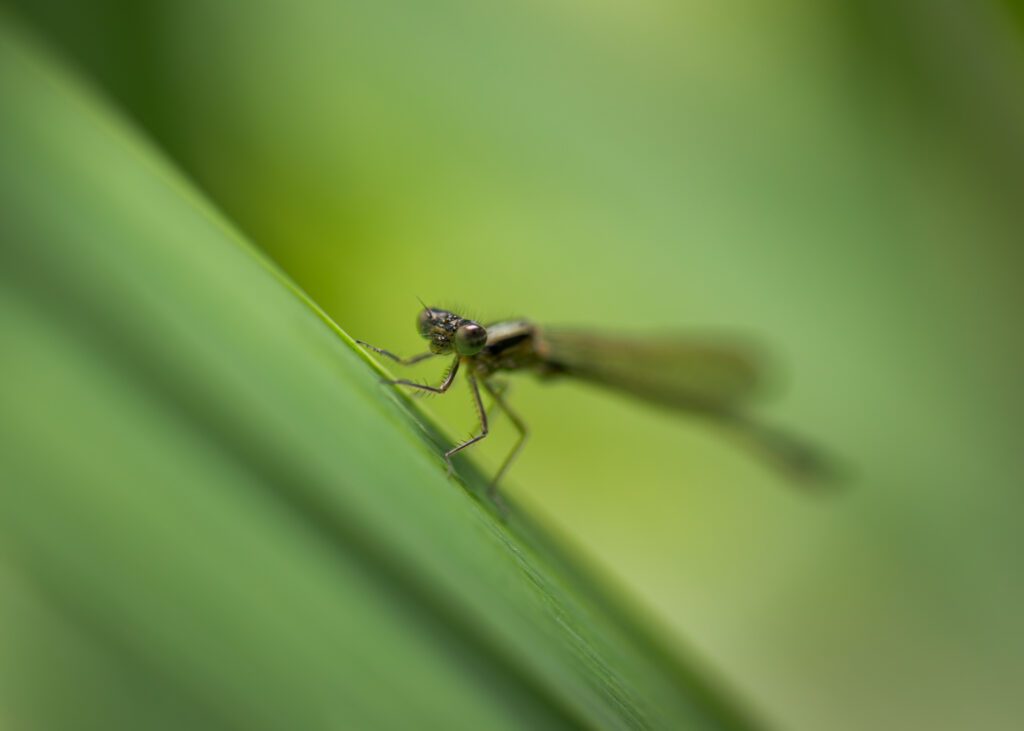
Landscape Photography And Heather Season
Towards the middle of August, I will make a big return to the Lake District fells in great anticipation of “Heather Season”. Heather Season is a small window in which extensive areas of the Lake District (and moorlands across the country) become a sea of stunning pinks and purples. There is no better opportunity for landscape photography during the summer and I will be making the most of the spectacular flowering heather. Also, various forecasts are predicting a somewhat humid summer this year. Not ideal from a comfort point of view, however, more moisture and humidity in the air can contribute to temperature inversions under the correct conditions. This is something I will be keeping an eye on and reacting to as and when opportunities arise.
If you are interested in reading more about what summer has to offer in terms of landscape photography, please consider reading my blog post from last summer.
As always, thanks for reading if you made it this far! Please consider following my social media channels for routine updates of my summer activities and more. Also, stay tuned for my exciting quarterly newsletter. Inside this quarter’s newsletter, you’ll find high-resolution photographs with a full breakdown of my adventures throughout spring.

